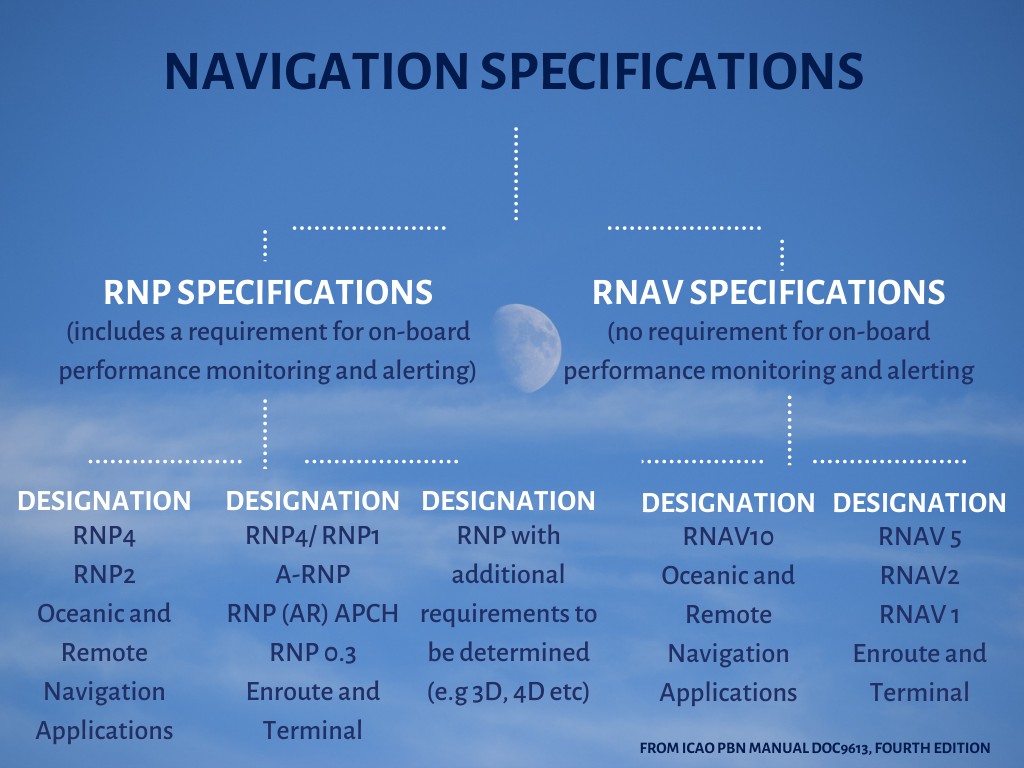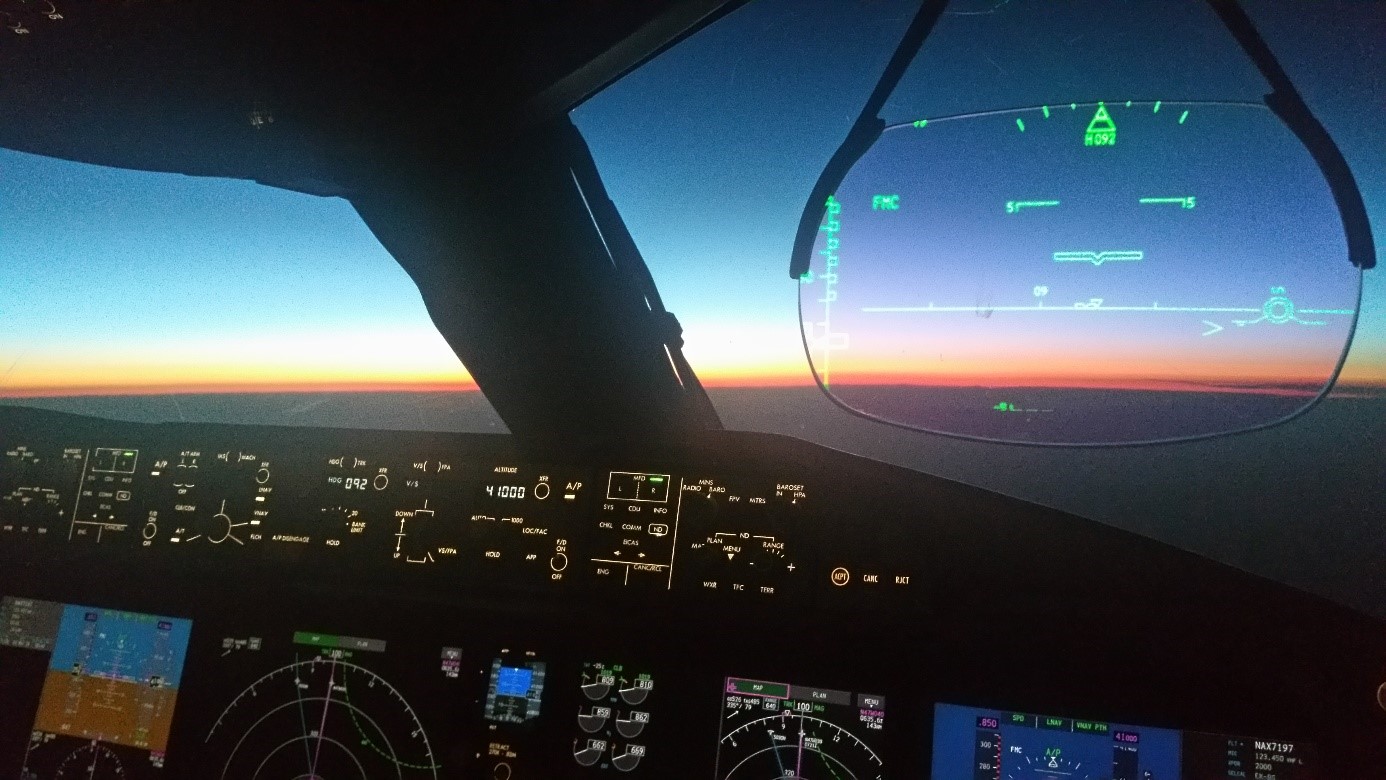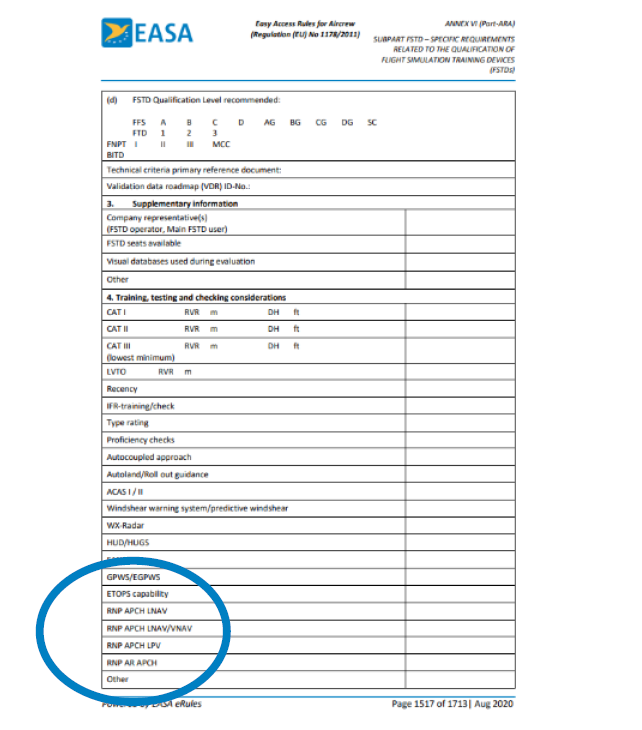If you are trying to understand Performance Based Navigation (PBN) this article will provide you with all the information you need. The article was written by our safety partner Stephen van Houwelingen from STAC as part of his own journey to implement PBN in a small operator. At the bottom the article is also provided as a handy PDF guide.
25 January 2022: Check out the new EASA FAQs on PBN Airspace Usage Requirements on the EASA Website.
Understand more about PBN and what it means for your operation?
Performance based navigation (PBN), has already been implemented in some countries and in some it is about to be. It may be required in specific airspace and at certain airports depending on the situation. The challenge, especially for some small operators and/or flight schools is to understand what they have to do about PBN and its associated rules. This article will give you an easy overview of all the aspects you have to consider. And if you still have any questions after reading this, do not hesitate to add them in the comments!
Some history about navigation in aviation
When we first started flying, navigation was based on looking outside the window at landmarks. The next step in navigation saw beacons on land, which meant we could fly around without needing visual clues. To help even more, Inertial Reference Systems (IRS) were developed to provide electronic references with global coverage. The downside of the land based beacons was their range and errors, and for the IRS that they would wander after a while giving an incorrect position. Although the latest IRS were very precise, there were still challenges. The solution came towards the end of the 20th Century when Global Navigation Satellite NSS systems came into play.
The first GNSS systems were not very accurate, but as time has passed, they have become very precise in location determination as well as elevation. This means that many, expensive ground-based beacons are being dismantled. While an NDB approach is still mandatory to train for your license, it is hardly used anymore for commercial flights. In 2002 ICAO published the Global Air Navigation Plan (second edition) that stated that states should identify the elements of GNSS that are provided and look at the economic savings when decommissioning ground-based navigational aids. In the third edition of that plan it is stated that the ultimate goal is to transition to GNSS that would eliminate the requirement for ground-based aids because these systems are more reliable and precise.
Maintenance and navigation errors of ground-based navigation systems like NDB and VORs showed that GNSS would enhance navigation performance and would be more cost efficient. Due to enhancing performance it could create more room for aircraft flying closer to each other. Navigation performance around the world uses different terminology so it was also agreed to convert to a single, standard terminology which is all based on the term PBN. PBN: area navigation based on performance requirements for aircraft operating along an ATS route, on an instrument approach procedure or in a designated airspace.
This means four things are needed to actually utilise PBN:
- The aircraft needs to be PBN approved – [965/2012: CAT.IDE.A.345 (for NCO, NCC, SPO similar rules)]
- The operator needs to establish procedures for PBN – [965/2012: ANNEX IV, Subpart B / CAT.OP.MPA.126].
- The pilot needs to be PBN endorsed – [1178/2011: article 4a / AMC1 FCL.310; FCL.515(b); FCL.615(b) – LOs / appx 7, appx 9 to ANNEX I ]
- The airspace requires PBN – [applicable AIP]
In addition to this, within PBN there are two categories that needs separate approval, RNP AR APCH and RNP 0.3 (H). Which stands for Required Navigation Performance Authorisation Required and Required Navigation Performance of 0,3 NM for helicopters. In this situation the operator needs an approval as well. This relates to SPA.PBN.100 regulation.
Global differences among regulators
As there are a lot of different regulators around the world, not all are using the same terminology. The existing RNP10 designation for example is inconsistent with PBN RNP and RNAV specifications. RNP 10 does not include requirements for on-board performance monitoring and alerting. Renaming current RNP 10 routes, operational approvals, etc., to an RNAV 10 designation would be an extensive and expensive task, which is not cost-effective. Consequently, any existing or new operational approvals will continue to be designated RNP 10, and any charting annotations will be depicted as RNP 10. [PBN manual ICAO - DOC 9613]

[ICAO PBN Manual DOC 9613, fourth edition]
The main difference in PBN when looking at RNAV and RNP is that RNP requires on-board performance monitoring and alerting. To learn more details about PBN have a look at the presentation made by ICAO.
The aircraft needs to be PBN approved
At a regulatory level, the requirement is that the operator of an aircraft shall ensure that, when PBN is required for the route or procedure to be flown, that the relevant PBN navigation specification is stated in the AFM or other document that has been approved by the certifying authority as part of an airworthiness assessment or is based on such approval. Additionally, the aircraft must be operated in conformance with the relevant navigation specification and limitations in the AFM or other document referred above. (CAT.OP.MPA.126)

Most commercial aircraft are already PBN approved. The FMC’s are well developed and together with the GNSS systems on board they are easily able to achieve an Actual Navigational Performance (ANP) of 0,05, where the Required Navigational Performance (RNP) is 0,3 for an approach. A different case applies for general aviation traffic. More and more single engine piston, 2 or 4 seater aircraft in use at flight schools are being converted for PBN but the 5000 euro cost of investment is naturally a barrier for many. As is the complexity of the rules, which hopefully this article with help with. To know if the aircraft is approved Air Operations (EU No 965/2012) gives us information on how to find out if your aircraft is approved. When we look at GM2 CAT.IDE.A.345 this Guidance Material gives you a complete list of acceptable sources of information to check if your aircraft is eligible for PBN operation.
https://www.easa.europa.eu/sites/default/files/dfu/EasyAccessRules_for_AirOperations-Oct2019.pdf
The operator needs to establish procedures for PBN
For operations where a specific navigation for PBN has been prescribed and no specific approval (like in SPA.PBN.100) as the operator you will need to establish procedures for this. These procedures are established to make the use of PBN safer. The operator should establish operating procedures specifying normal, abnormal and contingency procedures.
This should cover areas such as, how do you brief PBN operation, how can you see you have a failure and what do you do in case of a failure. Furthermore the operator should establish procedures specifying electronic navigation database management and relevant entries in the Minimum Equipment List (MEL). As the crew is under control of the operator, it should specify the flight crew qualification and proficiency constraints and also ensure that the training programme for relevant personnel is consistent with the intended operation
(AMC1 CAT.OP.MPA.126)
The pilot needs to be PBN endorsed
To obtain a PBN approval you need to fulfil certain requirements. You need to complete a course of theoretical knowledge including PBN, complete flying training including PBN and successfully complete a skill test applicable for the aircraft you want to fly. In your licence the term PBN will be added.
As there are no international standards for this yet, NAA’s have established their own processes on how to request this endorsement. EASA has made a cross reference excel sheet to find out how your NAA has implemented this endorsement.
What do you actually have to do when you already have license?
If you are already have a license with Instrument Rating, you will need to follow a ground course and simulator training/checking. This program is written into the FCL.600 Instrument rating and most of the NAAs have information available on how to comply. The basic idea is that this conversion training contains all the new items about PBN. Refer to AMC 1 FCL.310, FCL.515(b), FCL.615(b) for the theoretical part. For the practical part you may think about how to use your flight manual, performance calculation, use of ATC, ATC flight plan, PBN departures and arrivals, etc. all related to PBN operation. This training needs to be followed at an ATO which has the approval for IR training and the capabilities and equipment to train PBN. So when in doubt, and you need this endorsement, just contact a nearby ATO and ask them what you need to do in your specific case.
If you are training to become a pilot
Make sure the ATO you are training at has the approval to train PBN. To obtain the PBN privilege or maintain it, at least one approach during your skill test/LPC shall be a RNP APCH. Mind to check the capability of the FSTD if you are doing your LPC on an FSTD. To check this, you need to look at the FSTD certificate. Part 4 of the certificate “training, testing and checking considerations” indicate if an FSTD is capable for: RNP APCH LNAV, RNP APCH LNAV/VNAV, RNP APCH LPV, RNP AR APCH. If either of these are available this FSTD can be used for establishing or revalidation of your PBN endorsement.

The airspace requires PBN
How do you know if the airspace you are flying through requires a certain Required Navigation Performance (RNP)? Implementing Regulation 965/2012 mandates an operator shall ensure that, where the flight is intended to operate on a route or in an area where a navigation specification is prescribed, it has an appropriate RNP approval, and that all the conditions applying to that approval will be satisfied. To ensure this you need to look at your charts and manuals. Let’s start with a big one, the North Atlantic: Next to RNAV, this airspace also has different requirements and procedures, but that’s a different article for later. The RNAV for OCEANIC airspace can be found in your route manual. Usually this route manual refers to a system like Jeppesen, Lido or something else. The one I have available is Jeppesen and that tells me: “Horizontal Navigation Requirements for unrestricted NAT HLA AIRSPACE Operations
(a) Lateral Navigation: The navigation system accuracy requirements for NAT MNPSA/HLA operation should only be based on the PBN specifications, RNP10 (PBN application of RNAV 10) or RNP 4 (see ICAO PBN Manual Doc 9613).” This is of course the usual way to find out what you need. But if you want to find the official regulation you will have to look at the respective AIP of the NAT ATS provider (AIP IRELAND for Shanwick, AIP US for New York, AIP Canada for Gander)
The NAT HLA is of course a big area. If we have a look at Europe and we fly from the UK to Greece we cross several countries. For each country the respective AIP tells you the requirements for PBN. Luckily systems like Jeppesen has summarised the information and we don’t have to do that ourselves.
Now let’s have a look at a specific country, Holland for example, my home country: In Jeppesen, the part for the state rules and procedures – Netherlands, it indicates that for the Amsterdam FIR all aircraft (other than state aircraft) operating on routes above FL 95 shall be equipped with RNAV equipment meeting RNAV 5. No worries so far. But the Amsterdam TMA requires RNAV 1 (except for state aircraft, VFR operations and helicopter operations. I challenge you to do the same for your country. Find out in the AIP what it tells you about PBN.
If we go to a smaller scale, and go to a specific airport, you may find out that NDB/VOR approaches are disappearing and RNP approaches are put in place. This all fits in the concept of upgrading the way we navigate. NDBs and VORs are expensive to maintain and suffer from errors. The approach charts you use indicate what type of RNP approach you can fly. This can be RNP AR, RNP LNAV/VNAV, RNP LNAV, RNP LPV. Where for the RNP AR approach a separate approval is required for the operator and airport.
The future
Regulation (EU) 2018/1048 describes the laying down airspace usage requirements and operating procedures concerning performance-based navigation. In this regulation it is stated that from 1 June 2030 all approaches and SIDs should be based on PBN. This means that providers of ATM/ANS should implement at all instrument runway ends of 3D approach procedures and, where those providers have established SID routes or STAR routes, PBN. From that date only in the case of contingency other means than PBN are allowed.
This raises the question if Flight Training Organisations should amend their training program as GNSS based navigation will become the normal way of navigation. A pilot must still be able to fly an NDB/VOR/ILS approach. However NDB’s and VOR’s will disappear more and more like previously stated in this article. This calls for a review of the training program: How much emphasis should you put on training the old school way of navigation. Do you need to train it a lot, because it is more difficult, or only now and then because the chance of using it is small. It’s useful to compare it with arc flying. I have trained this a couple of times during my flight training.
Due to the technical advancements, the rare times I had to fly it, it was programmed into the Navigation system that produced a track for me to follow, the Flight Director told me how to fly the airplane to follow that track, and if I only want to monitor I could switch on the auto pilot!
In time these type of approaches will disappear when GNSS gets more reliable and we get used to it. Like we don’t use landmarks anymore to fly from Holland to India. It depends as well on your aircraft, what type of automation has it for navigation.
Keep an eye out on more information in these series of explaining aviation subjects in an easy and simple way! If you have any questions after reading this article please let us know, we are happy to help!
Finally, the next edition to our Safety Music Playlist
This guide is part of your PBN journey. Together4Safety is here to start positive safety conversations so that wecan solve our challenges together as a community. We also add another song to our Safety Music Playlist,Navigate by Band of Skulls. Share you thoughts with us by email at safetypromotion@easa.europa.eu.

Thanks for sharing, very useful!
Great! Appreciate!
Really useful information, especially because some documents do not differentiate RNAV and RNP in a easy maner for understanding.
Also I would like to mention, that means and capabilities of aircraft to comply with requirements of RNP (on board performance monitoring and aleeting) are not well written in AFMs and FCOM's of some types of aircraft. I do not want to mention types.
Could you please answer my questions?
Does a pilot need to undertake PBN training at the ATO, if he/she is ATPL holder, and has type rating on aircraft (A320 or B737) wich is capable for PBN, and who, during his recurrent trainings pass PBN recurrent trainings at airline both theoretical and practical with FSTD and who operates PBN in real operation?
Does ATPL holder need to have PBN endorsement in his license if for example there is already A320 endorsement in his license?
Why I am asking, because I don't believe that anybody could have A320 endirsement without demonstrating ability to make an RNP approaches like RNAV GNSS approaches in FSTD as it is a part of SOP of A320.
In another way, I think that something should be written like an endorsement for RNP AR approaches, of course, after obtaining both theoretical and practical training.
Also, I would like to suggest for operators to includ in their flight crew recurrent trainings information of capabilities of aircraft they operate. For example A320 aircraft is allowed to make RNAV approaches with LNAV/VNAV minimum if the OAT is not lower tnan a temperature mentioned in IAP, or not lower than a certain degrees of Celsius, when a temperature correction is required. Otherwise an approache shall be made with LNAV minima. Why, because it is not allowed to make a manual insertions of constraints on FAF/FAP and afterwards. For A320 everything is clear. However on some B737 NG (depending on FMS update) and MAX models, it is allowed to insert temperatute corrected altitude constraints on FAF, MAPt, for LNAV/VNAV approaches or for IAN approaches, in accordance with the FCTM. Let's imagine airline which operates B737 NG both with FMS which is capable to recalculate correct descent parth after altitude constraint insertion on FAF and with FMS which is not capable, which can lead to a cinfusions and undesired errors.
Also it is necessary to provide crews easy access in EFB applications or in paper format manuals, to check abilities of tail number of the aircraft they are flying, for better preparations for approaches in cold weather conditions.
Good article John, thanks!
Could you clear up my confusion though, please?
In the section "Global differences among regulators" you say "RNP 10 does not include requirements for on-board performance monitoring and alerting" yet later on "RNP requires on-board performance monitoring and alerting" (M&A)...
The graphic (blue table from ICAO PBN Manual, headed Navigation Specifications) seems to confirm that RNP does require M&A...?
Thanks in advance!
Hi Paul/ Armen - thanks for the questions. I take them away and will come back to you as quickly as possible.
Hi Paul/Armen,
Thank you for your questions. Hopefully my answers below will make it clear for you. If you have any additional ones, please let me know.
1. Does a pilot need to undertake PBN training at the ATO, if he/she is ATPL holder, and has type rating on aircraft (A320 or B737) which is capable for PBN, and who, during his recurrent trainings pass PBN recurrent trainings at airline both theoretical and practical with FSTD and who operates PBN in real operation? ----If you have all this it seems that you also have a PBN endorsement, however it should be requested (like a revalidation) at your issuing authority. How that is done and noted or not in your license, depends on the issuing authority. I included a link to a document in the article where he can find how his authority certifies PBN
2. Does ATPL holder need to have PBN endorsement in his license if for example there is already A320 endorsement in his license? Why I am asking, because I don't believe that anybody could have A320 endorsement without demonstrating ability to make an RNP approaches like RNAV GNSS approaches in FSTD as it is a part of SOP of A320. In another way, I think that something should be written like an endorsement for RNP AR approaches, of course, after obtaining both theoretical and practical training.----- You should be endorsed to in some way if your operator is approved and you fly PBN routes and approaches. How this endorsement is indicated in your license is depending on your issuing authority.
3. Also, I would like to suggest for operators to include in their flight crew recurrent trainings information of capabilities of aircraft they operate. For example A320 aircraft is allowed to make RNAV approaches with LNAV/VNAV minimum if the OAT is not lower tnan a temperature mentioned in IAP, or not lower than a certain degrees of Celsius, when a temperature correction is required. Otherwise an approache shall be made with LNAV minima. Why, because it is not allowed to make a manual insertions of constraints on FAF/FAP and afterwards. For A320 everything is clear. However on some B737 NG (depending on FMS update) and MAX models, it is allowed to insert temperatute corrected altitude constraints on FAF, MAPt, for LNAV/VNAV approaches or for IAN approaches, in accordance with the FCTM. Let's imagine airline which operates B737 NG both with FMS which is capable to recalculate correct descent parth after altitude constraint insertion on FAF and with FMS which is not capable, which can lead to a cinfusions and undesired errors.
-------
A very good idea to clearly indicate this in recurrent trainings.
In CAT.OP.MPA.126 the regulations require the operator
That it shall ensure that, when performance-based navigation (PBN) is required for the route or procedure to be flown:
(a) the relevant PBN navigation specification is stated in the AFM or other document that has been approved by the certifying authority as part of an airworthiness assessment or is based on such approval; and
(b) the aircraft is operated in conformance with the relevant navigation specification and limitations in the AFM or other document referred above.
So they Ensure the aircraft should be capable for the planned routes given to you, next to that, the crew are required to check it according to CAT.OP.MPA.126 (amc material)
For recurrent checking only flying an RNP approach is required. For training aircaft systems review is required, and this could perfectly include PBN capabilities.
4. Is it necessary to provide crews easy access in EFB applications or in paper format manuals, to check abilities of tail number of the aircraft they are flying, for better preparations for approaches in cold weather conditions. -------According to CAT.OP.MPA.126 you should check this. The operator when planning the route and the crew when flying the route. The capabilities should be mentioned in the AFM/FCOM where you should have access to (also during the flight).
5. Could you clear up my confusion though, please? In the section "Global differences among regulators" you say "RNP 10 does not include requirements for on-board performance monitoring and alerting" yet later on "RNP requires on-board performance monitoring and alerting" (M&A)... The graphic (blue table from ICAO PBN Manual, headed Navigation Specifications) seems to confirm that RNP does require M&A...?----- My apologies I think that is a forgotten typo.. RNP 10 does include … or RNAV 10 does not include.
The difference is between RNP (requiring it) and RNAV (not requiring it)
Thank you for you comments!
Stephen
Hi Armen, one small addition. It is actually ORO.GEN.110(d) which requires the operator to ensure that its aircraft are equipped and its crews are qualified as required
for the area and type of operation.
But in the end, the commander is responsible when you actually start the flight, so I would consider this a shared responsibility.
Hi Stephen
Thank you!
1. According to CAT.OP.MPA.126 you should check this. The operator when planning the route and the crew when flying the route. The capabilities should be mentioned in the AFM/FCOM where you should have access to (also during the flight) ......... /..........
AMC2 CAT.OP.MPA.126 Performance-based navigation
(d) Altimetry settings for RNP APCH operations using Baro VNAV
(2) Temperature compensation
(i) For RNP APCH operations to LNAV/VNAV minima using Baro VNAV:
(A) the flight crew should not commence the approach when the aerodrome temperature is outside the promulgated aerodrome temperature limits for the procedure unless the area navigation system is equipped with approved temperature compensation for the final approach;
(B) when the temperature is within promulgated limits, the flight crew should not make compensation to the altitude at the FAF and DA/H;
(C) since only the final approach segment is protected by the promulgated aerodrome temperature limits, the flight crew should consider the effect of temperature on terrain and obstacle clearance in other phases of flight.
The regulation with AMC GM is perfectly written. I agree.
Appreciate for the depth of coverage,thanks
Please log in or sign up to comment.